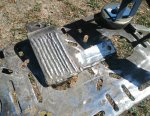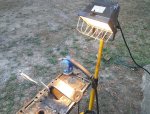California
Well-known member
I have a decent helmet, recommended and seconded by welders on TBN a while back, and with many good Amazon reviews: Antra-AH6-260-0000
I can't find an adjustment that lets me see the seam I need to follow, or a clear view of the puddle to see bead creation as I move along. Too bright is just glare and I still can't see the seam. The HF helmet that this replaced wasn't as hard to use! (That one lacked a setting low enough for a 110v welder so I replaced it with this a while back). Advice? Get something else? While my Antra is 'Amazon's Choice', I see a Yeswelder is now their best seller.
My experience isn't as good as the comments on TBN or Amazon. What should I change, to see what I'm welding with this Antra helmet?
I can't find an adjustment that lets me see the seam I need to follow, or a clear view of the puddle to see bead creation as I move along. Too bright is just glare and I still can't see the seam. The HF helmet that this replaced wasn't as hard to use! (That one lacked a setting low enough for a 110v welder so I replaced it with this a while back). Advice? Get something else? While my Antra is 'Amazon's Choice', I see a Yeswelder is now their best seller.
My experience isn't as good as the comments on TBN or Amazon. What should I change, to see what I'm welding with this Antra helmet?


